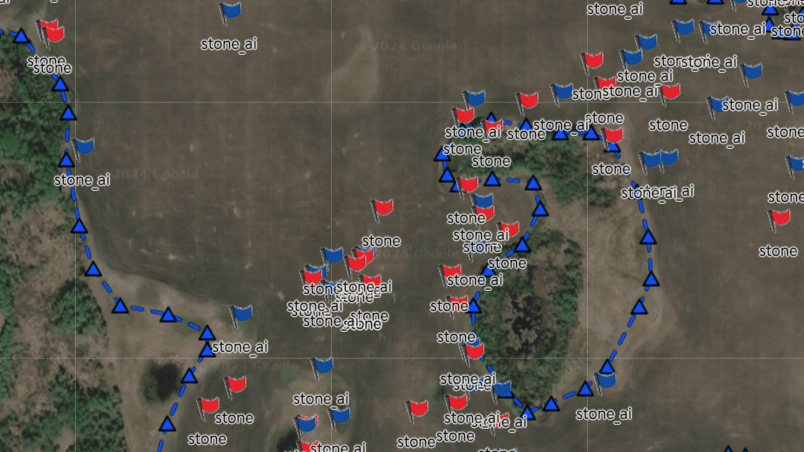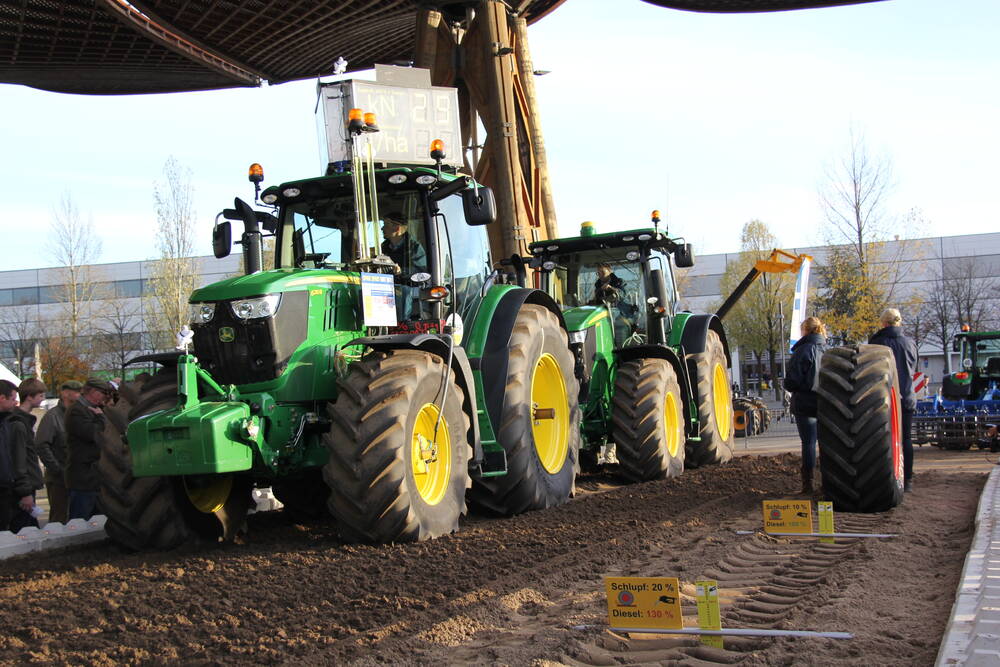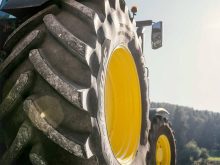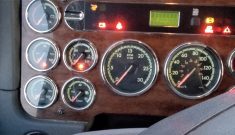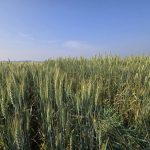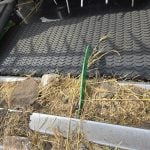One thing farmers can be certain of is although fuel costs have been fluctuating lately, they aren’t likely to decline significantly over time. Initiatives to reduce greenhouse gas emissions are likely to continue to drive up the cost of all fuels, including diesel. So looking at ways to reduce fuel consumption on the farm is starting to make more sense than ever.
One simple and virtually cost-free way to do that is pay close attention to the inflation pressures on radial tractor tires. It’s easy to overlook, and many growers may not realize just how much improper tire inflation can affect fuel consumption.
An event at Agritechnica in Germany back in 2013 offered one of the best practical demonstrations of that I’ve ever seen, and it’s worth taking a look at what it revealed.
Read Also

Basket rakes pitched for top-quality windrows
Boxy, clean windrows help make better hay bales for livestock farms and forage growers, and a basket rake excels in those areas, says Bart Elder of Vermeer.
To show how radial tire inflation pressures affect fuel consumption, a group from the University of South Westphalia in Germany created a track to simulate field soil conditions on the show grounds. It then hooked two tractors together. The rear tractor provided a drawbar load on the first tractor as they drove over the soil on the test track.
On the first pass, the pulling tractor’s tires were overinflated to 26 p.s.i., much too high for the Michelin Bib tires it was equipped with. Onlookers could see it had an obviously high rate of wheel slip. Two glass tubes mounted on the hood were where the engine drew diesel from on each pass.
On the second pass, the inflation pressure was adjusted to 12 p.s.i. Wheel slip was significantly reduced. By looking at the amount of fuel left in each of the glass tubes, spectators could clearly see at the end of the two passes how much fuel the tractor used on each pass.
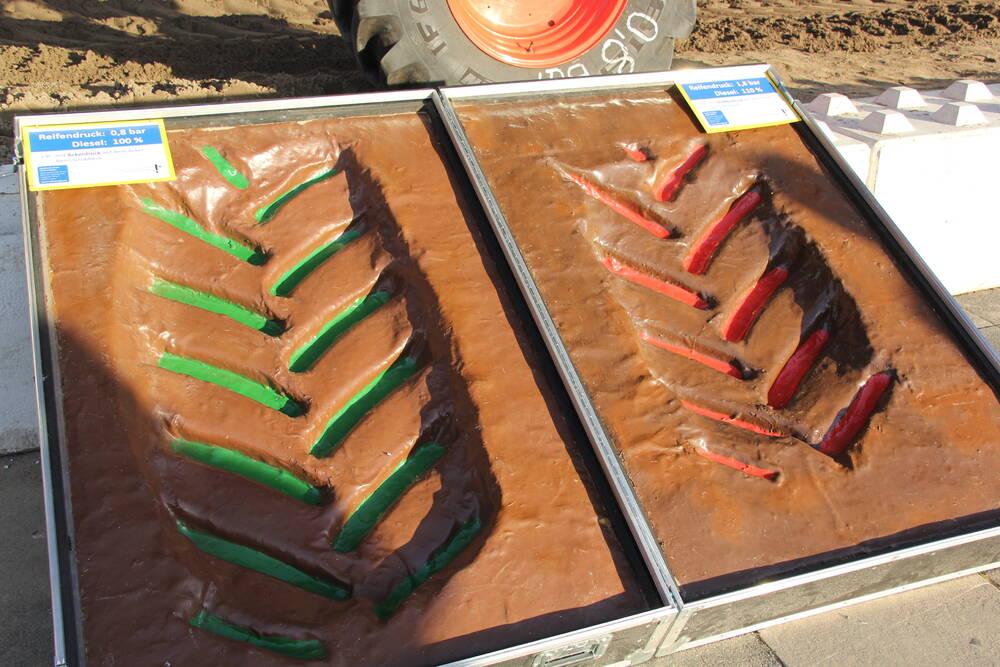
The second pull, with proper tire inflation, saw an 11 per cent reduction in fuel consumption.
The test track also showed the effects of wheel slip on the soil. The higher the level of wheel slip, the deeper the tire track dug down into the dirt, which would increase compaction along with continuing to proportionally increase fuel consumption.
To put some practical numbers on those demonstration results, consider a hypothetical day in the field with the tractor burning 200 litres of fuel. Let’s say $1 per litre for easy calculations. Just a 10 per cent reduction would reduce the fuel cost $20 per day from eliminating excess wheel slip. All it would take is a couple of minutes to ensure tire pressure was properly adjusted, something that could easily be done while the tractor warms up. And it wouldn’t even need to be done every day.
Of course, those exact numbers will be different depending on the tractor used and the price of fuel. But you get the picture.

